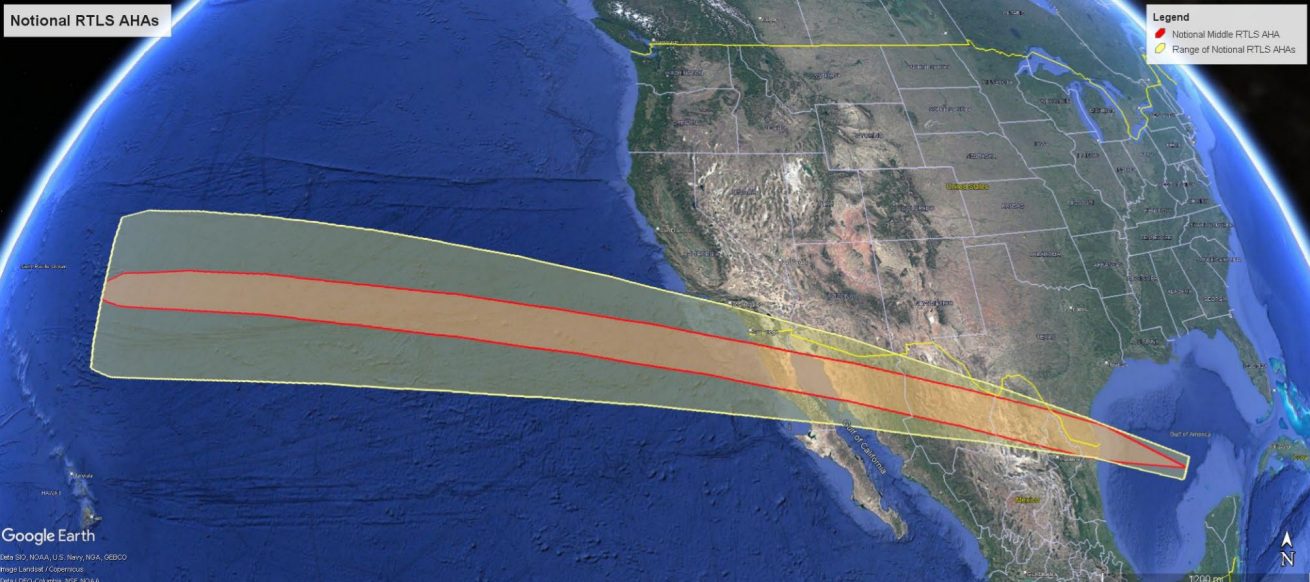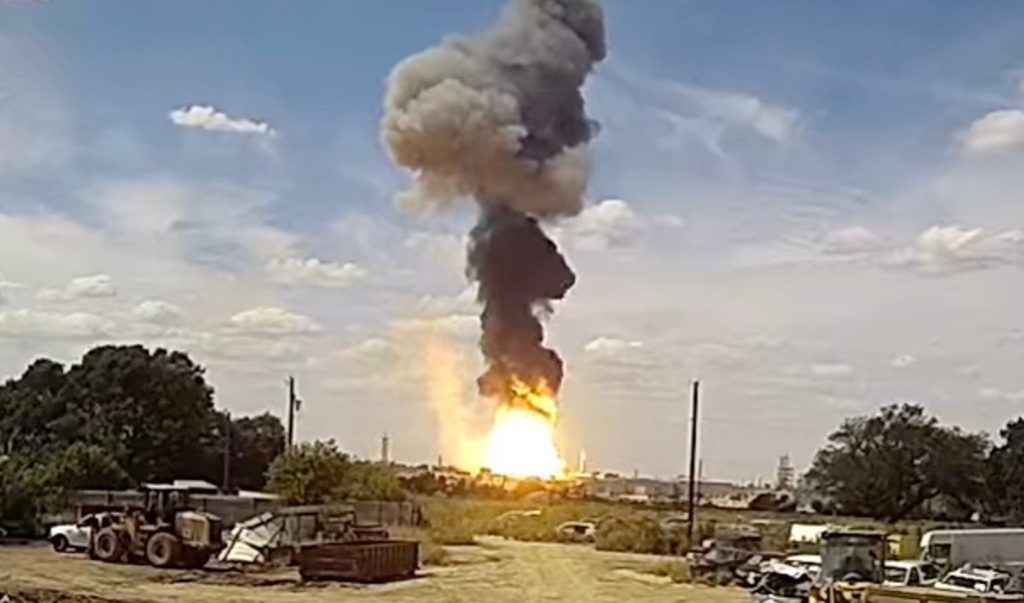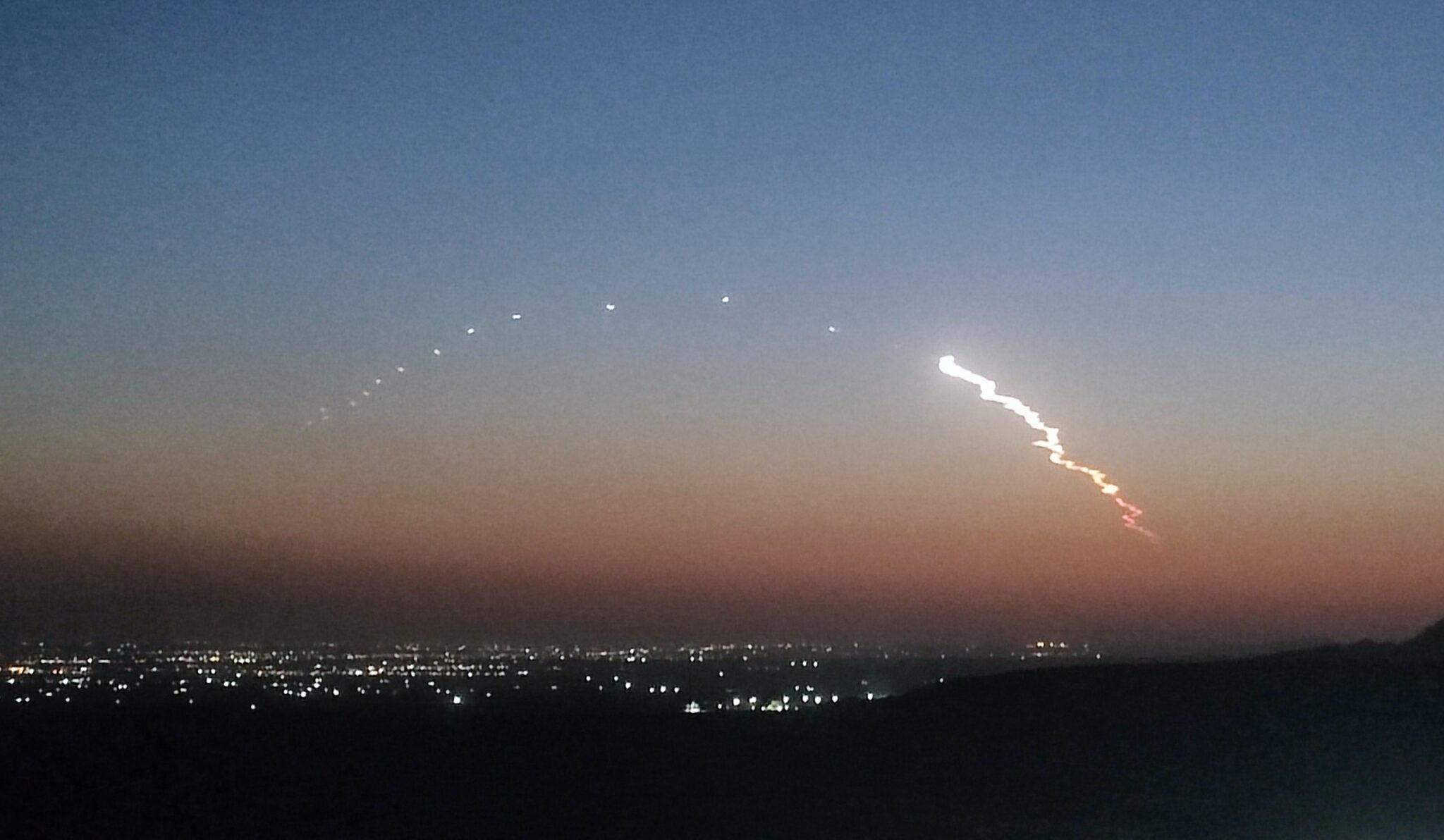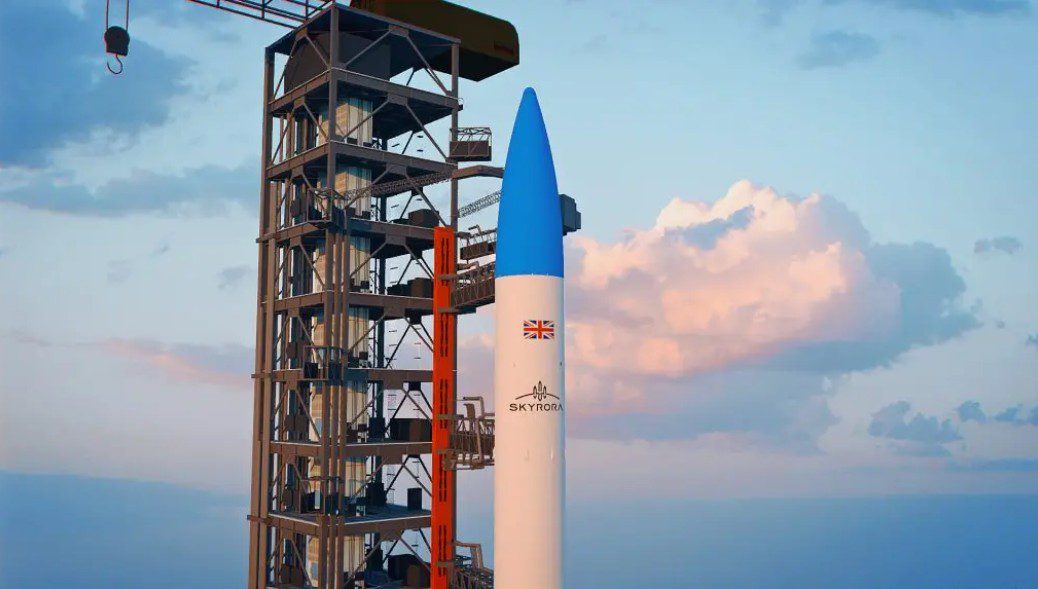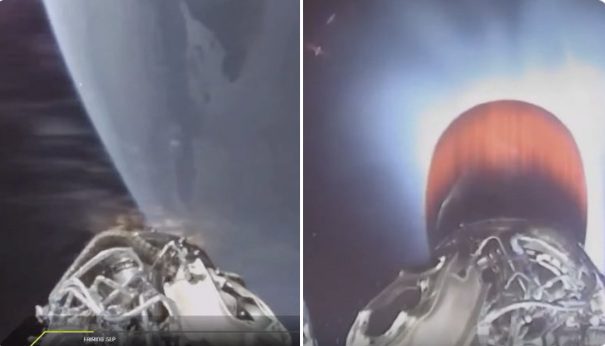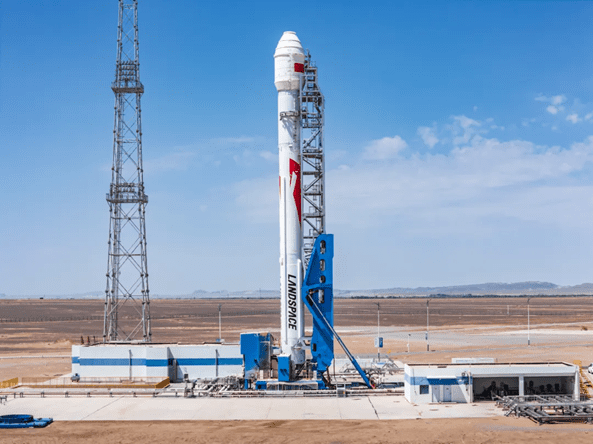After being delayed by weather earlier in the month, a Falcon Heavy rocket (using Block 5 boosters) was finally launched at 0107 GMT on 29 December 2023 from Pad LC-39A at the Kennedy Space Center, Florida, USA with the seventh mission of the Boeing-built US military X-37B unmanned space plane being held inside the fairing. This was later released. The exact nature of the release orbit was not disclosed but it is thought to be beyond low Earth orbit (LEO). The mission is called variously the OTV-7 and the flight USSF-52 (Seradata calls the mission X-37B/OTV-7). The Falcon Heavy’s core first stage B1084 on its first flight was used in expendable mode (without landing legs), with its debris splashing down, downrange. The reusable booster stages B1064 and B1065, both on their fifth flights, were landed back at LZ-1 and LZ-2 near the launch site.
It has been conjectured that the X-37B/OTV-7 mission may be used to investigate the CSSHQ mini-spaceplane, China’s equivalent to the X-37B on its third mission which was launched earlier in the month. However, this would very much depend on their relative orbits.
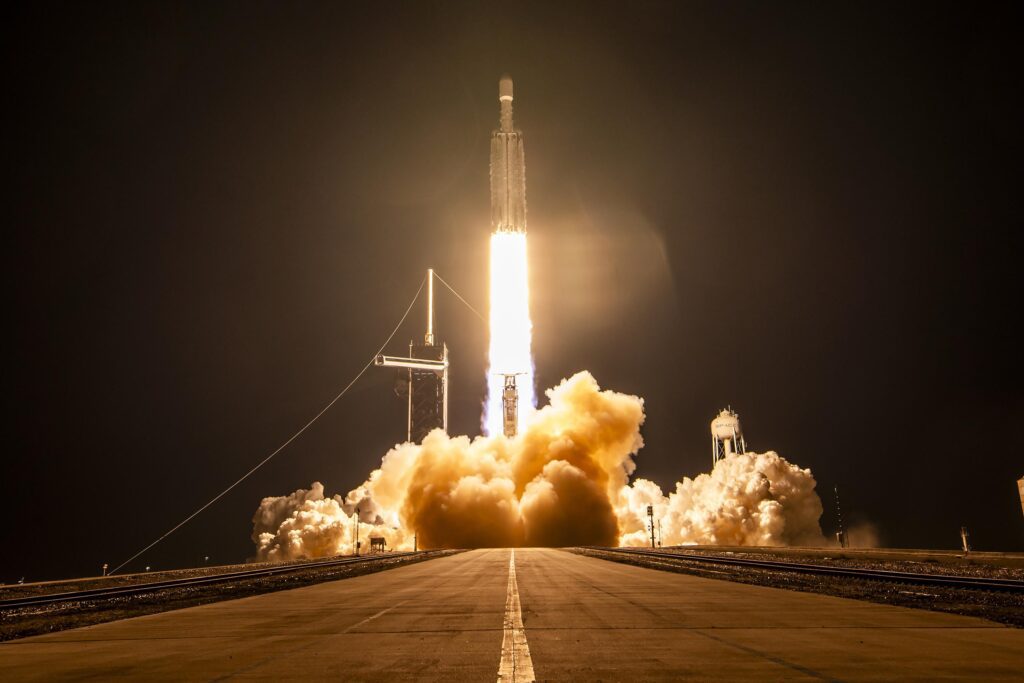
Falcon Heavy on USSF-52 carrying the OTV-7 mission of the X-37B mini-spaceplane. Courtesy: SpaceX
https://twitter.com/i/status/1740529654170026233
A few hours later at 0401 GMT on the same day a Falcon 9v1.2FT Block 5 rocket was launched from the nearby launch pad SLC-40 at Cape Canaveral, Florida, with Starlink Group 6-36. The launch carried 23 v2 Mini satellites as part of the second generation Starlink constellation. The reusable first stage B1069 on its 12th flight, was landed on a drone barge A Shortfall of Gravitas down range in the Atlantic.
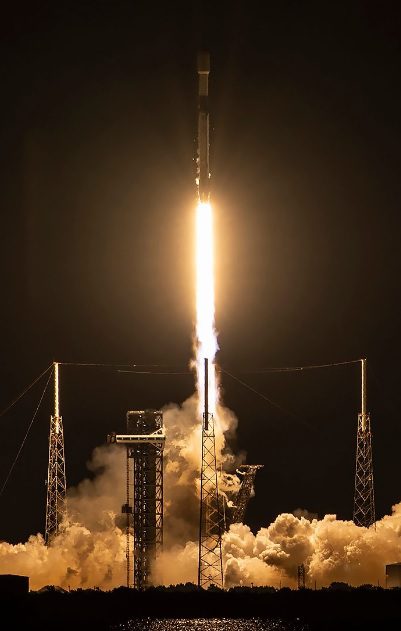
Falcon 9v1.2FT Block 5 launches Starlink Group 6-36. Courtesy: SpaceX



